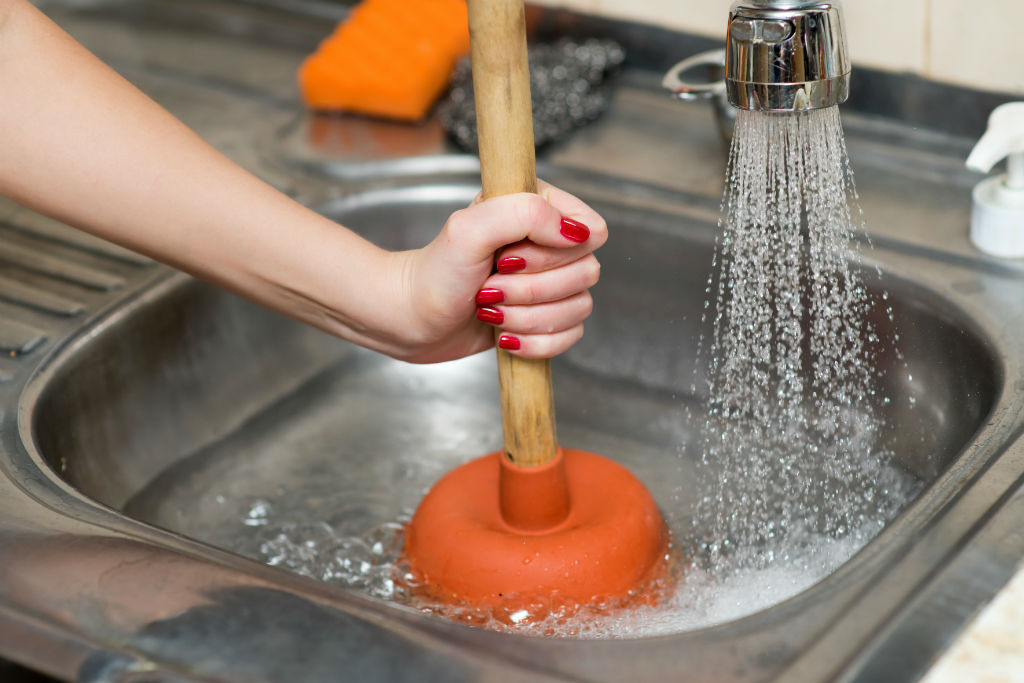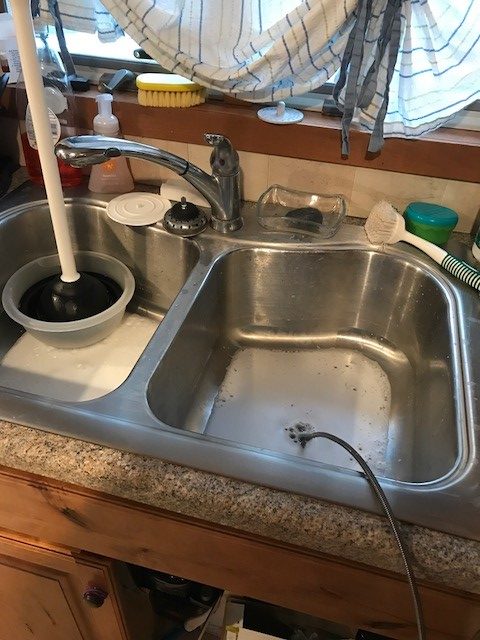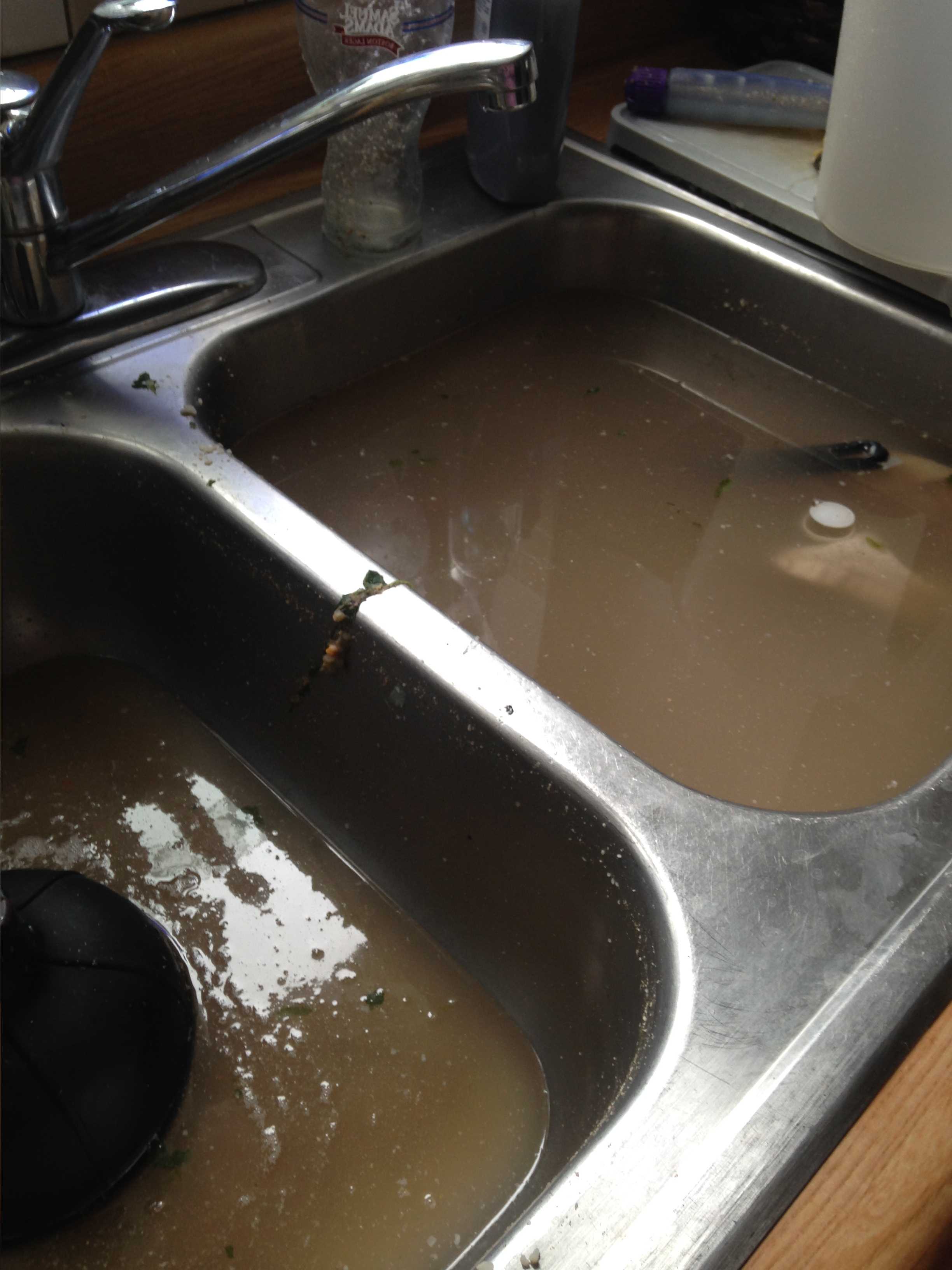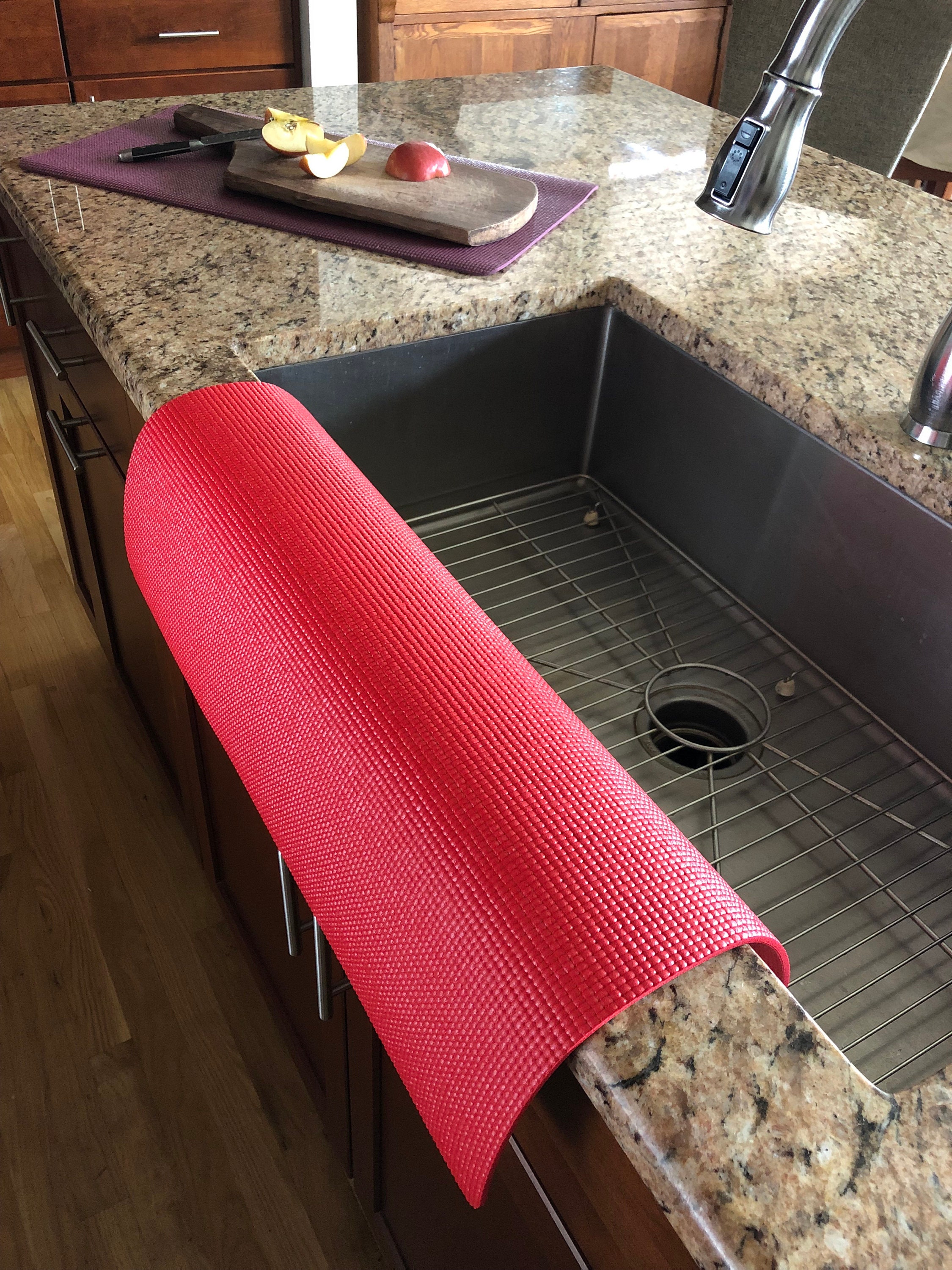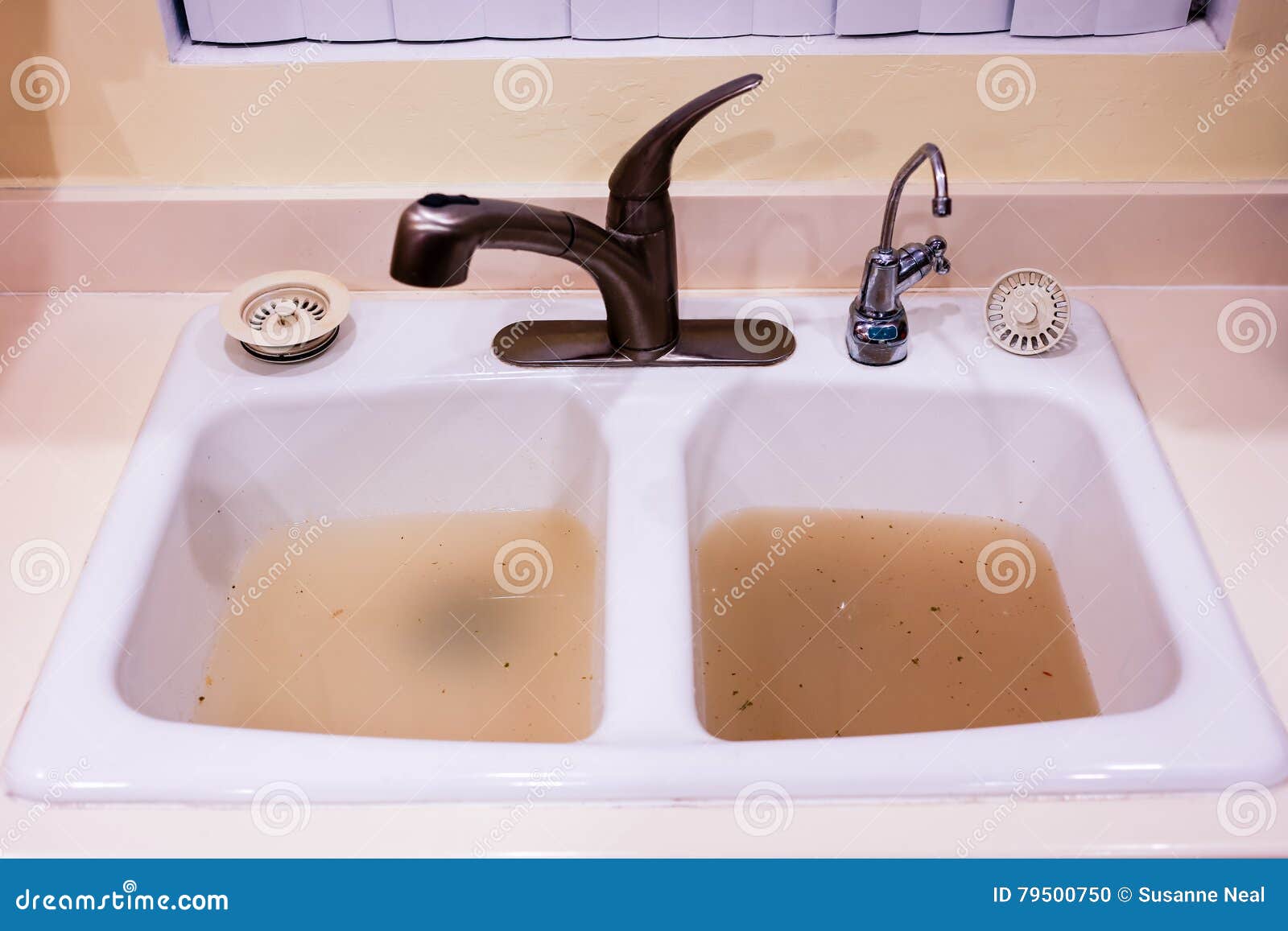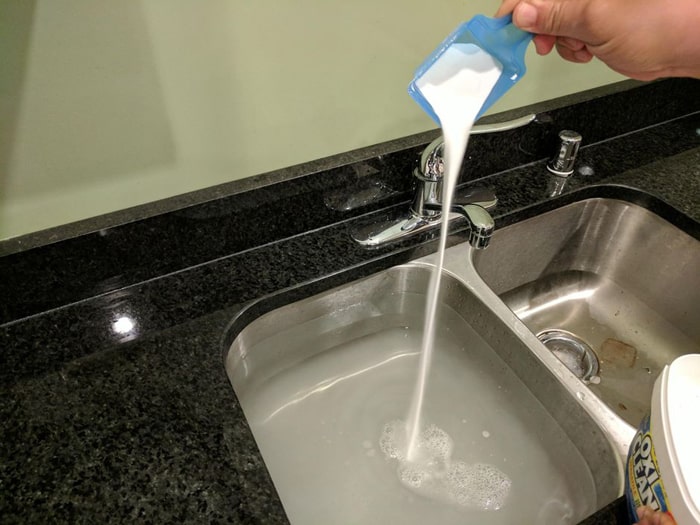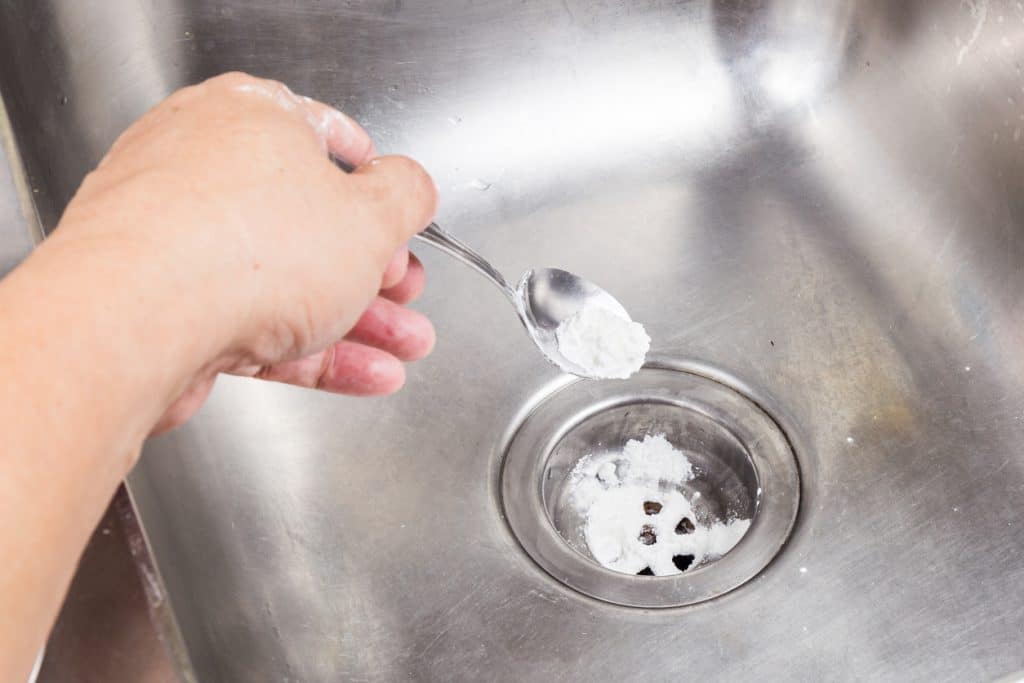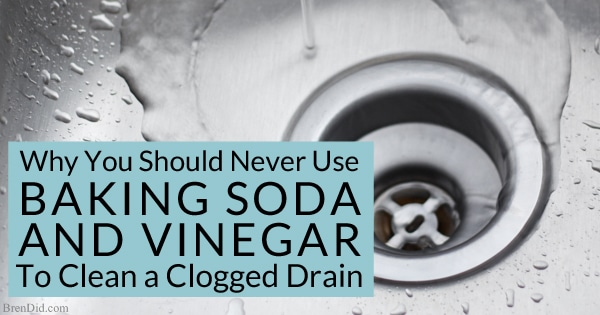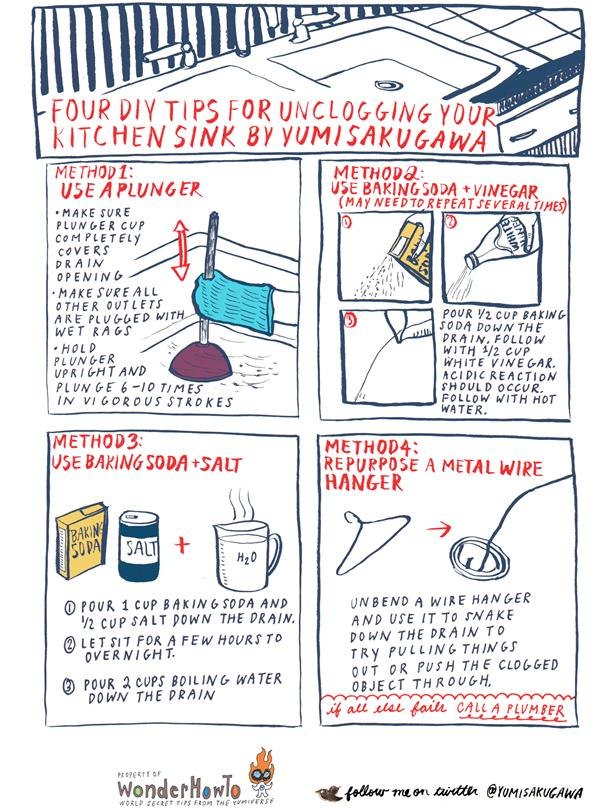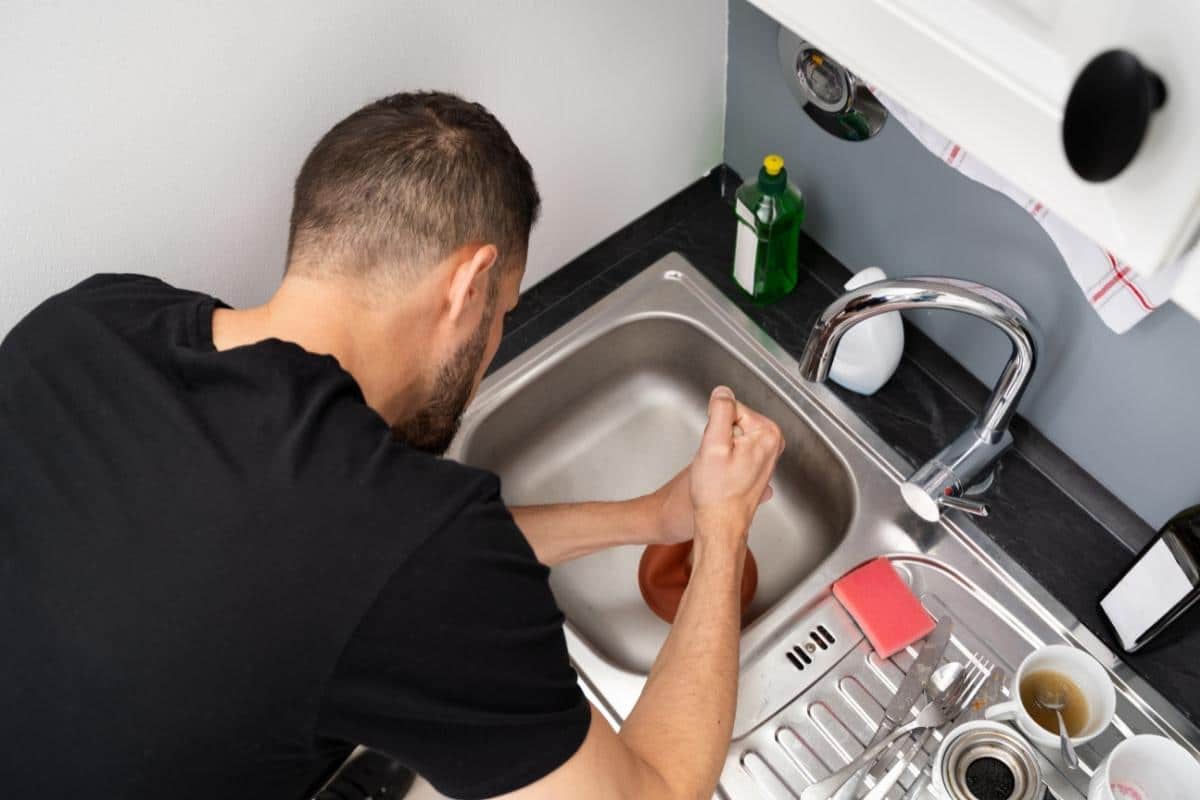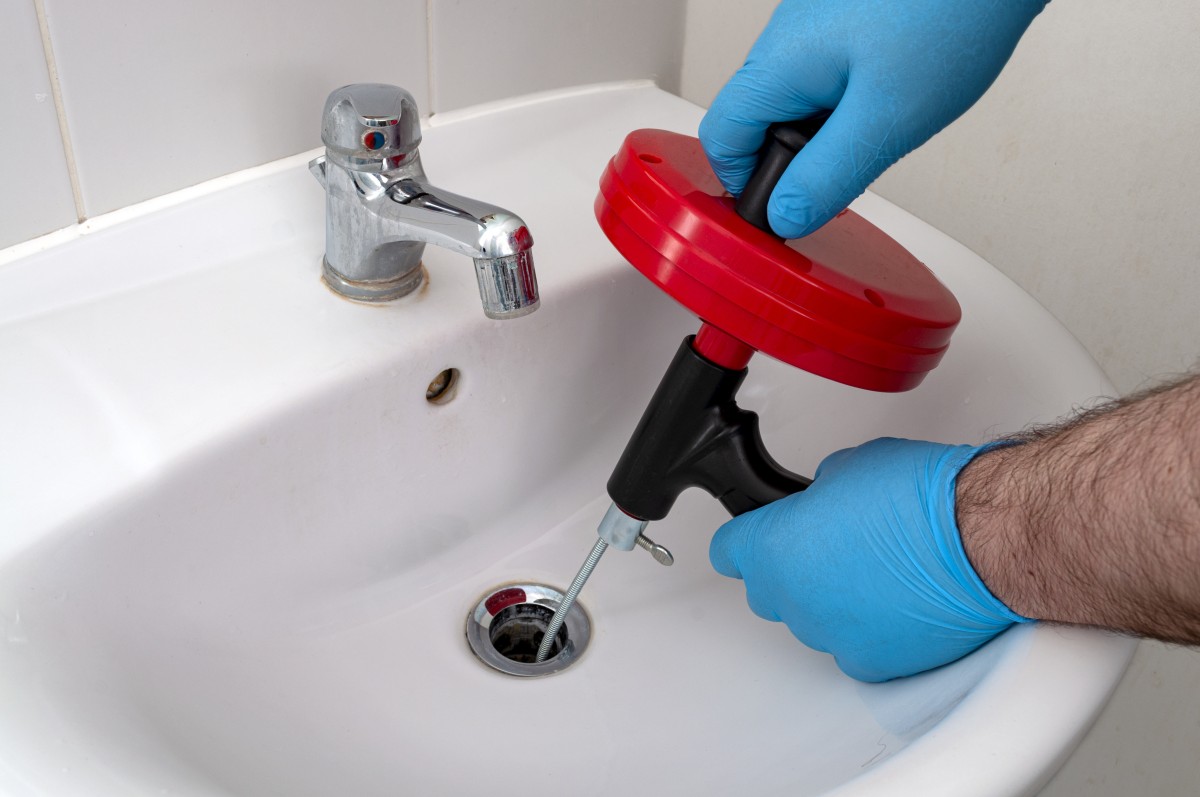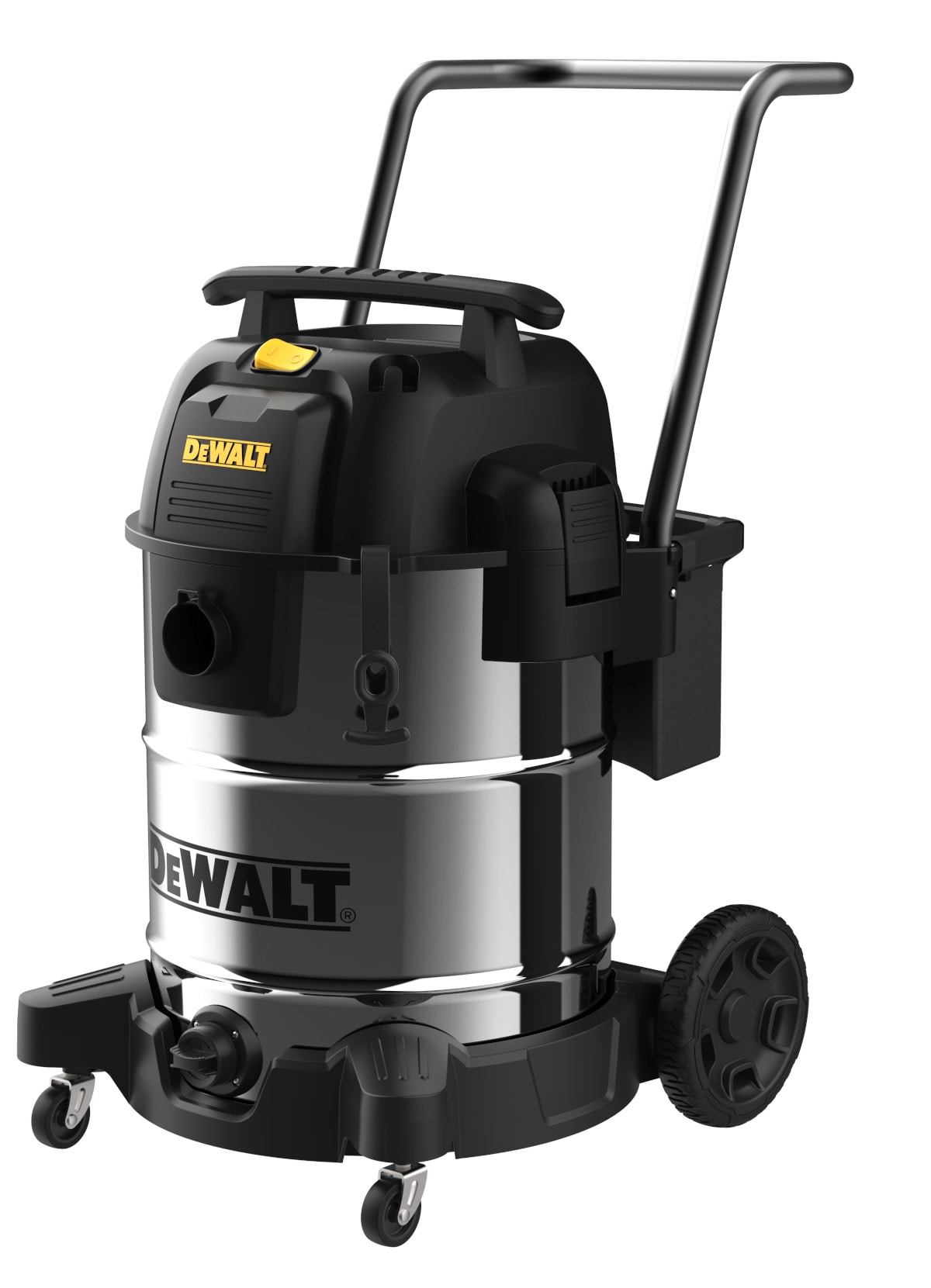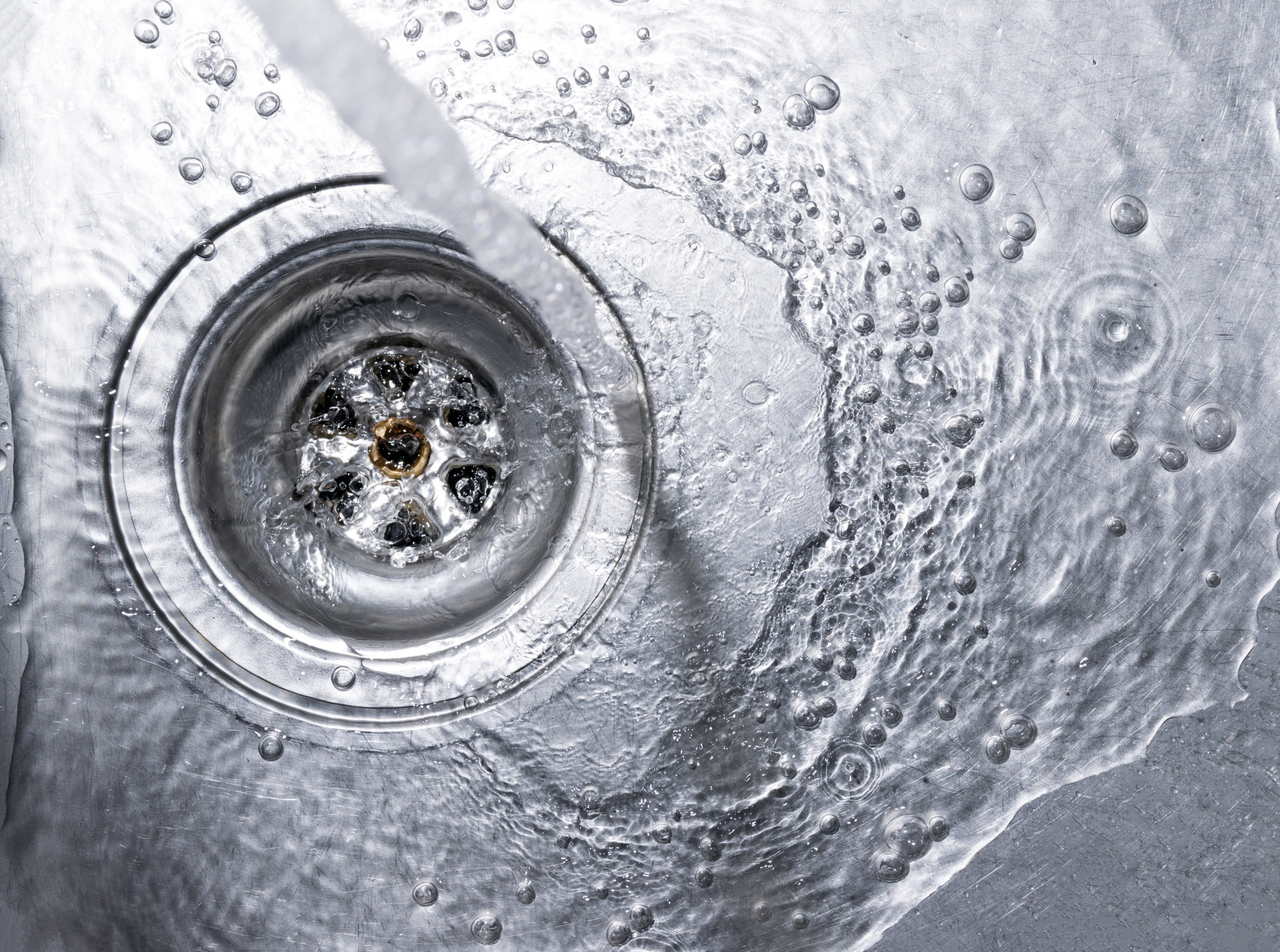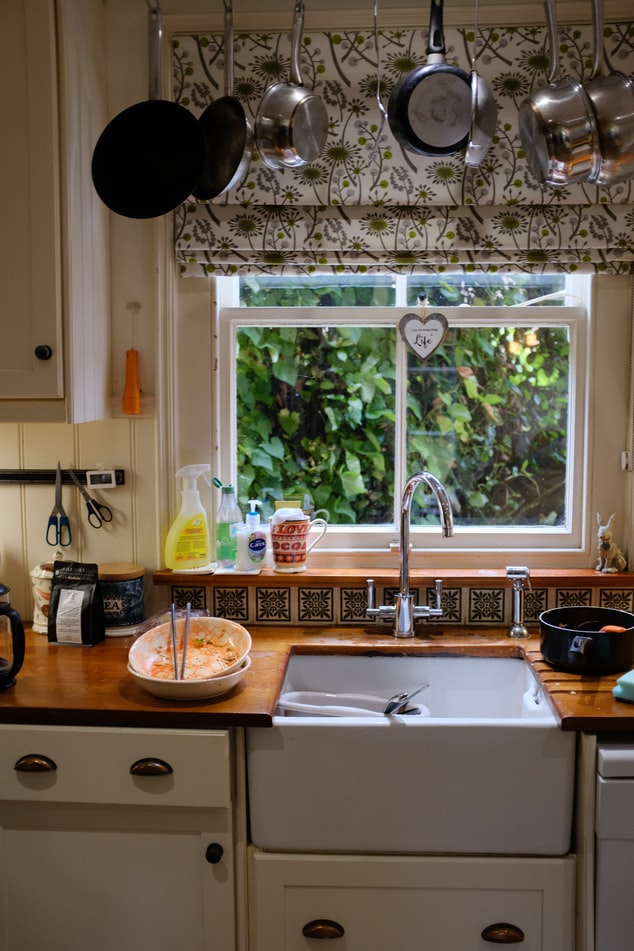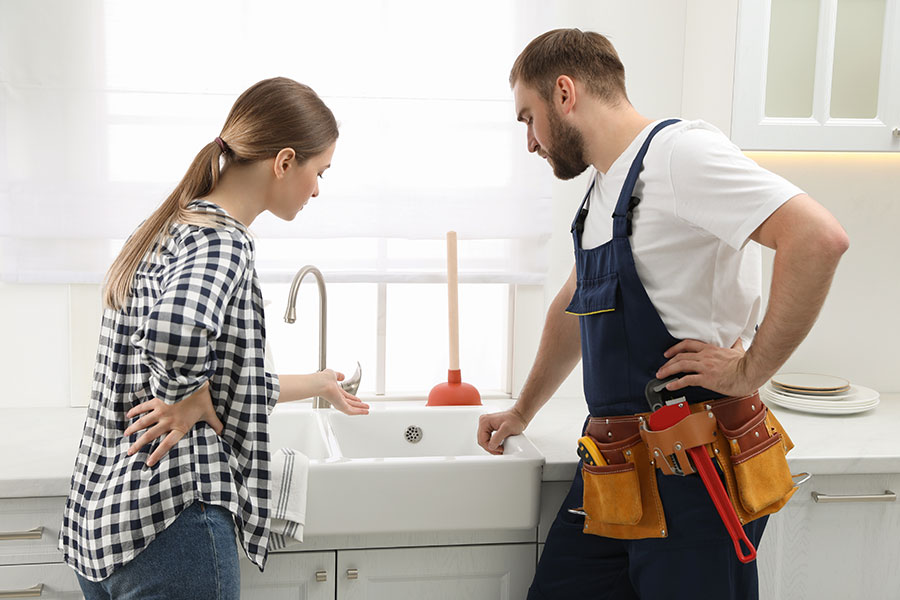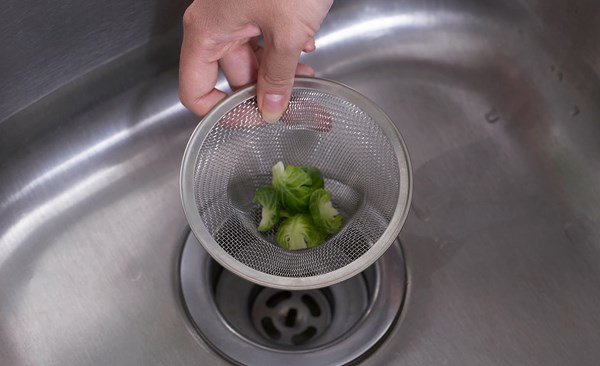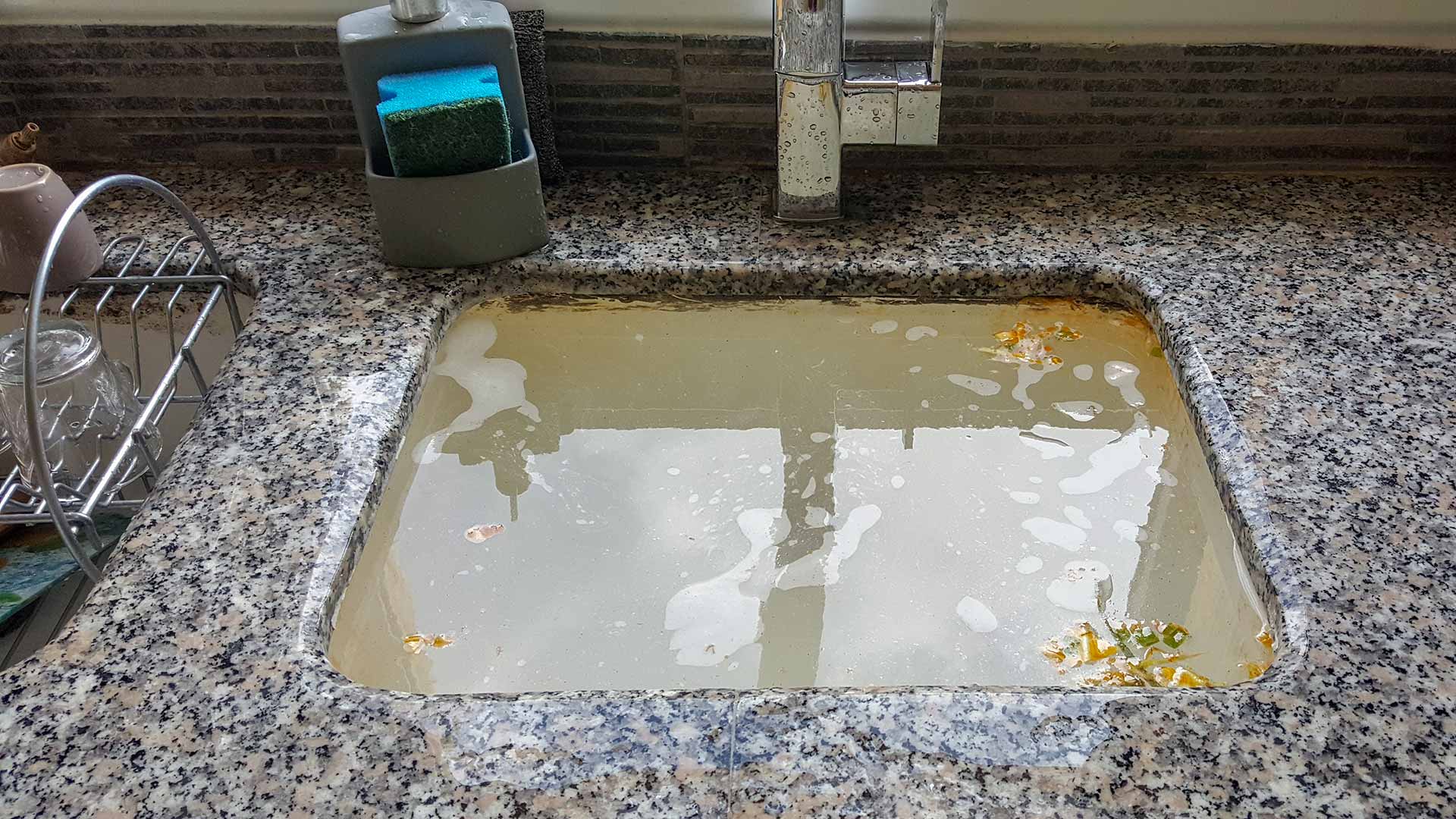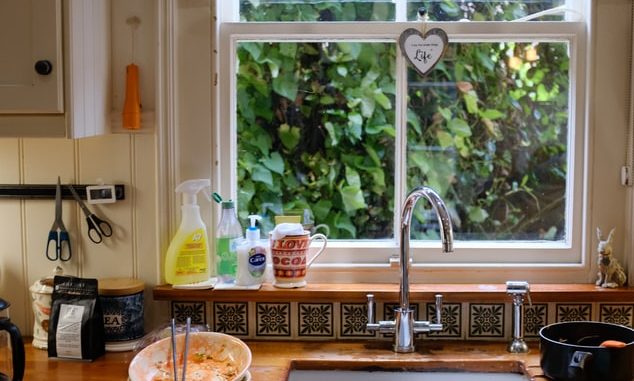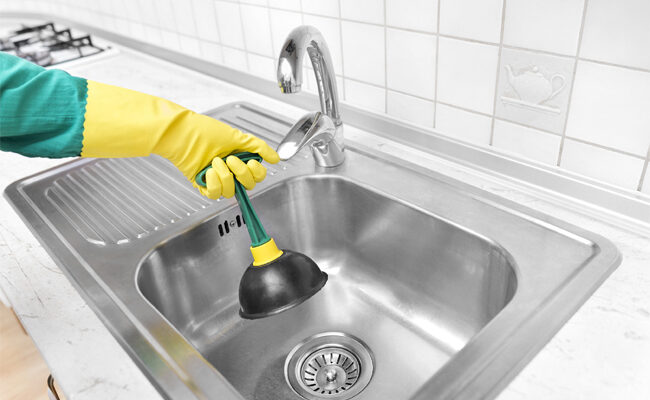If you're dealing with a clogged kitchen sink, it can be a major inconvenience. Not only is it difficult to use the sink, but it can also lead to unpleasant odors and potential damage to your pipes. Before calling a plumber and spending a lot of money, try these simple methods to unclog your kitchen sink drain. Plunger: The first thing you can try is using a plunger. Make sure to cover the overflow opening with a wet cloth and plunge vigorously for a few minutes. This should help loosen the clog and allow it to drain. Baking Soda and Vinegar: Another natural method is to use a mixture of baking soda and vinegar. Pour 1/2 cup of baking soda down the drain, followed by 1/2 cup of vinegar. Let it sit for 10-15 minutes and then flush with hot water. This will create a chemical reaction that can break up the clog. Snake: If the clog is further down the drain, you may need to use a plumbing snake. Insert it into the drain and turn it clockwise while pushing it down. This should help break up the clog and allow it to be pulled out. Wet/Dry Vacuum: If you have a wet/dry vacuum, you can also try using it to suck out the clog. Make sure to create a tight seal around the drain and use the vacuum on the highest setting. These methods should help clear a clogged kitchen sink drain, but if they don't work, you may need to call a professional plumber.How to Unclog a Kitchen Sink Drain
If your kitchen sink has two sides, it can be frustrating when both sides are clogged. Here are some tips on how to fix a clogged kitchen sink on both sides. Hot Water: The first thing you can try is pouring hot water down the drain. This can help loosen any grease or food particles that may be causing the clog. Make sure the water is not boiling hot, as this can damage your pipes. Plunger: As mentioned before, a plunger can be an effective tool for unclogging a kitchen sink. Make sure to cover one side of the sink with a wet cloth and plunge on the other side vigorously for a few minutes. Baking Soda and Salt: Another natural method is to mix equal parts baking soda and salt and pour it down the clogged drain. Follow it up with boiling water and let it sit for a few minutes before flushing with hot water. Plumbing Snake: If the clog is further down the drain, you may need to use a plumbing snake on both sides of the sink. This can help break up the clog and allow it to be pulled out. If these methods do not work, it is best to call a professional plumber to avoid causing any damage to your pipes.How to Fix a Clogged Kitchen Sink on Both Sides
A clogged kitchen sink drain can be a nuisance, but it can be cleared with a few simple steps. Boiling Water: The first thing you can try is pouring boiling water down the drain. This can help break up any grease or food particles that may be causing the clog. Make sure to use caution and not to pour boiling water down a porcelain sink, as it can crack. Vinegar and Baking Soda: As mentioned before, a mixture of vinegar and baking soda can be an effective natural method for clearing a clogged kitchen sink drain. Let the mixture sit for 10-15 minutes before flushing with hot water. Plumbing Snake: If the clog is further down the drain, you may need to use a plumbing snake. Insert it into the drain and turn it clockwise while pushing it down. This should help break up the clog and allow it to be pulled out. If these methods do not work, it is best to call a professional plumber to avoid causing any damage to your pipes.How to Clear a Clogged Kitchen Sink Drain
A clogged kitchen sink with a disposal can be a bit more tricky to fix, as the disposal can become jammed with food particles and debris. Here are some steps to fix a clogged kitchen sink with disposal. Turn off the Power: The first step is to turn off the power to the disposal by unplugging it or turning off the circuit breaker. This will prevent any accidents from occurring. Plunger: As mentioned before, a plunger can be an effective tool for unclogging a kitchen sink. Make sure to cover the disposal opening with a wet cloth and plunge vigorously for a few minutes. Allen Wrench: If the disposal is still jammed, you can try using an Allen wrench to manually turn the blades and dislodge any particles. Insert the wrench into the bottom of the disposal and turn it back and forth until it moves freely. Reset Button: Once the disposal is clear, you can turn the power back on and press the reset button on the bottom of the disposal. This should get it back up and running. If these methods do not work, it is best to call a professional plumber to avoid causing any damage to your disposal.How to Fix a Clogged Kitchen Sink with Disposal
If your kitchen sink is completely clogged and filled with standing water, it can be a frustrating situation. Here are some steps to fix a clogged kitchen sink with standing water. Bucket and Plunger: The first thing you can try is using a bucket to remove as much standing water as possible. Then, use a plunger to try and loosen the clog. Baking Soda and Vinegar: Another natural method is to use a mixture of baking soda and vinegar. Pour 1/2 cup of baking soda down the drain, followed by 1/2 cup of vinegar. Let it sit for 10-15 minutes and then flush with hot water. Snake: If the clog is further down the drain, you may need to use a plumbing snake. Insert it into the drain and turn it clockwise while pushing it down. This should help break up the clog and allow it to be pulled out. It may take a few tries to completely clear the clog, but these methods should help get the standing water draining again.How to Fix a Clogged Kitchen Sink with Standing Water
As mentioned before, a mixture of baking soda and vinegar can be an effective natural method for unclogging a kitchen sink. Here are the steps to follow. Step 1: Remove any standing water from the sink. Step 2: Pour 1/2 cup of baking soda down the drain. Step 3: Follow it up with 1/2 cup of vinegar. Step 4: Let the mixture sit for 10-15 minutes. You may hear a fizzing sound as the chemical reaction occurs. Step 5: Flush the drain with hot water to help wash away any remaining particles. This method can be repeated a few times if necessary to completely break up the clog.How to Fix a Clogged Kitchen Sink with Baking Soda and Vinegar
A plunger can be an effective tool for unclogging a kitchen sink. Here are the steps to follow. Step 1: Remove any standing water from the sink. Step 2: Cover the overflow opening with a wet cloth. Step 3: Place the plunger over the drain and push down firmly. Step 4: Vigorously plunge for a few minutes. Step 5: Remove the plunger and check to see if the water is draining. If not, repeat the process a few times. It may take a few tries, but the plunger should help loosen the clog and allow it to drain.How to Fix a Clogged Kitchen Sink with a Plunger
If the clog is further down the drain, a plumbing snake can be a useful tool for breaking it up. Here's how to use one. Step 1: Remove any standing water from the sink. Step 2: Insert the snake into the drain and turn it clockwise while pushing it down. Step 3: When you feel resistance, continue to turn the snake and push it down until you feel it break through the clog. Step 4: Pull the snake back up and discard any debris that may have come loose. Step 5: Repeat the process a few times, if necessary, to completely clear the clog. It may take a few tries, but the snake should help break up the clog and allow it to be removed.How to Fix a Clogged Kitchen Sink with a Snake
If you have a wet/dry vacuum, it can also be used to suck out a clog in your kitchen sink. Here's how to do it. Step 1: Create a tight seal around the drain with the vacuum hose. Step 2: Turn the vacuum on the highest setting and let it run for a few minutes. Step 3: Check to see if the water is draining. If not, repeat the process a few times. If the clog is too large to be removed with the vacuum, you may need to try other methods or call a professional plumber.How to Fix a Clogged Kitchen Sink with a Wet/Dry Vacuum
The best way to deal with a clogged kitchen sink is to prevent it from happening in the first place. Here are some tips to help prevent clogs. Dispose of Grease Properly: Do not pour grease down the drain, as it can solidify and cause clogs. Instead, let it cool and dispose of it in the trash. Use Sink Strainers: Place sink strainers over the drain to catch food particles and prevent them from going down the drain. Run Hot Water: After using the sink, run hot water down the drain for a few minutes to help prevent buildup of grease and food particles. Regularly Clean Your Disposal: If you have a disposal, make sure to regularly clean it to prevent buildup of food particles and debris. By following these tips, you can help prevent clogs and keep your kitchen sink draining smoothly.How to Prevent a Clogged Kitchen Sink
How to Fix a Clogged Kitchen Sink: Tips and Tricks

The Importance of a Functional Kitchen
 The kitchen is one of the busiest and most important rooms in a house. It is where we prepare and cook our meals, gather with family and friends, and often serves as the heart of the home. As such, it is crucial to have a functional kitchen that meets our needs and makes our daily tasks easier. However, even with the most well-designed kitchens, there are bound to be issues that arise, such as a clogged kitchen sink.
The kitchen is one of the busiest and most important rooms in a house. It is where we prepare and cook our meals, gather with family and friends, and often serves as the heart of the home. As such, it is crucial to have a functional kitchen that meets our needs and makes our daily tasks easier. However, even with the most well-designed kitchens, there are bound to be issues that arise, such as a clogged kitchen sink.
The Frustration of a Clogged Kitchen Sink
 A clogged kitchen sink can be a major inconvenience and disrupt our daily routine. It can also cause unpleasant odors and even lead to bigger plumbing problems if not addressed promptly. The most common cause of a clogged kitchen sink is the accumulation of food scraps, grease, and other debris in the drain pipes. This can happen over time, especially with regular use, and can be exacerbated by inadequate cleaning and maintenance.
A clogged kitchen sink can be a major inconvenience and disrupt our daily routine. It can also cause unpleasant odors and even lead to bigger plumbing problems if not addressed promptly. The most common cause of a clogged kitchen sink is the accumulation of food scraps, grease, and other debris in the drain pipes. This can happen over time, especially with regular use, and can be exacerbated by inadequate cleaning and maintenance.
Identifying the Problem
 If you notice that your kitchen sink is draining slowly or not at all, it is likely that you have a clog. You may also hear gurgling noises or notice water backing up into the sink or dishwasher. In some cases, you may be able to see the clog, such as food particles or grease buildup, near the opening of the drain. However, sometimes the clog may be deeper in the pipes and not visible to the naked eye.
How to Fix a Clogged Kitchen Sink
Fortunately, there are several ways to fix a clogged kitchen sink, depending on the severity of the clog and the type of sink you have. Here are some tips and tricks to help you unclog your kitchen sink and get it back to functioning properly.
If you notice that your kitchen sink is draining slowly or not at all, it is likely that you have a clog. You may also hear gurgling noises or notice water backing up into the sink or dishwasher. In some cases, you may be able to see the clog, such as food particles or grease buildup, near the opening of the drain. However, sometimes the clog may be deeper in the pipes and not visible to the naked eye.
How to Fix a Clogged Kitchen Sink
Fortunately, there are several ways to fix a clogged kitchen sink, depending on the severity of the clog and the type of sink you have. Here are some tips and tricks to help you unclog your kitchen sink and get it back to functioning properly.
1. Use a Plunger
 A plunger can be a handy tool to have in your kitchen when dealing with a clogged sink. Make sure to cover the overflow opening in the sink with a wet cloth, then place the plunger over the drain and pump it up and down several times. This suction and pressure can help dislodge the clog and allow the water to drain.
A plunger can be a handy tool to have in your kitchen when dealing with a clogged sink. Make sure to cover the overflow opening in the sink with a wet cloth, then place the plunger over the drain and pump it up and down several times. This suction and pressure can help dislodge the clog and allow the water to drain.
2. Try a Natural Drain Cleaner
 Chemical drain cleaners can be harsh and damaging to your pipes, so it is best to opt for a natural alternative. Pouring a mixture of baking soda and vinegar down the drain can create a chemical reaction that can help break down and dissolve the clog. Let it sit for a few minutes before flushing with hot water.
Chemical drain cleaners can be harsh and damaging to your pipes, so it is best to opt for a natural alternative. Pouring a mixture of baking soda and vinegar down the drain can create a chemical reaction that can help break down and dissolve the clog. Let it sit for a few minutes before flushing with hot water.
3. Use a Drain Snake
 If the clog is deeper in the pipes, a drain snake can be a useful tool to have. Insert the snake into the drain and twist it to catch onto the debris and pull it out. If you do not have a drain snake, you can also try using a wire hanger, bent into a small hook, to remove the clog.
Preventing Future Clogs
To avoid future clogs in your kitchen sink, make sure to regularly clean and maintain your drain pipes. Avoid pouring grease and food scraps down the drain, and use a sink strainer to catch any debris. You can also pour hot water down the drain once a week to help prevent buildup.
If the clog is deeper in the pipes, a drain snake can be a useful tool to have. Insert the snake into the drain and twist it to catch onto the debris and pull it out. If you do not have a drain snake, you can also try using a wire hanger, bent into a small hook, to remove the clog.
Preventing Future Clogs
To avoid future clogs in your kitchen sink, make sure to regularly clean and maintain your drain pipes. Avoid pouring grease and food scraps down the drain, and use a sink strainer to catch any debris. You can also pour hot water down the drain once a week to help prevent buildup.
In Conclusion
 Having a clogged kitchen sink can be a frustrating and inconvenient issue to deal with, but with the right tools and methods, you can easily fix it yourself. Regular maintenance and proper disposal of waste can also help prevent future clogs. By following these tips and tricks, you can keep your kitchen sink functioning properly and enjoy a functional and efficient kitchen.
Having a clogged kitchen sink can be a frustrating and inconvenient issue to deal with, but with the right tools and methods, you can easily fix it yourself. Regular maintenance and proper disposal of waste can also help prevent future clogs. By following these tips and tricks, you can keep your kitchen sink functioning properly and enjoy a functional and efficient kitchen.




:max_bytes(150000):strip_icc()/freshen-and-unclog-drain-with-baking-soda-1900466-22-bbf940b70afa4d5abef0c54da23b1d3f.jpg)
:max_bytes(150000):strip_icc()/how-to-unclog-a-kitchen-sink-2718799_sketch_FINAL-8c5caa805a69493ab22dfb537c72a1b7.png)














